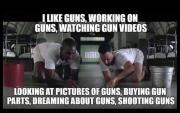First of all, FUCK cancer. And RIP Mr. Voigt.
This is something Avery has touted for a long time, in not so many words. The gist being that adding a bit tension from extension of the MCP joint helps stabilize the upper finger so it's easier to isolate the PIP joint.
MCP joint in partial flexion:
And in extension:








 Reply With Quote
Reply With Quote


